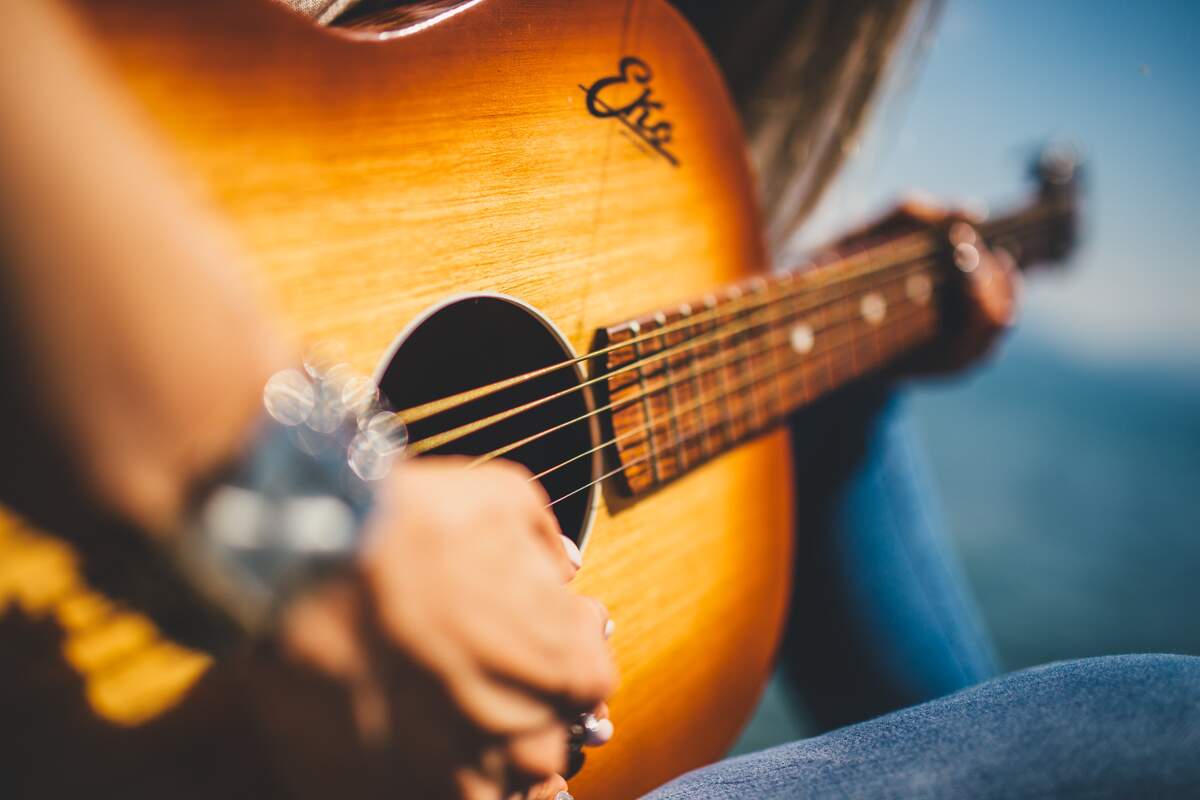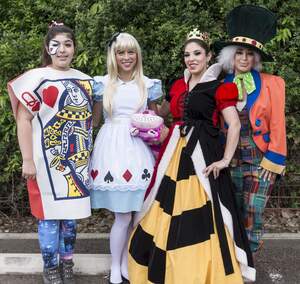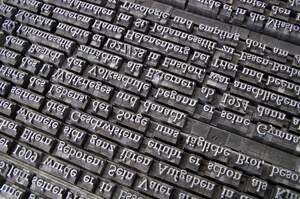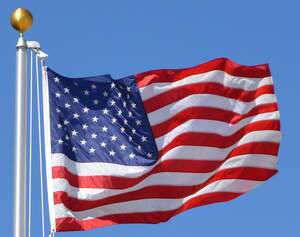

National Country Music Day
Observed
annually on July 4th
Dates
Tags
Music & Sound
Hashtags
Sources
https://en.wikipedia.org/wiki/Country_music
https://www.britannica.com/art/country-music
https://www.countryliving.com/life/a43297225/july-holidays-and-observances/
https://www.holidayinsights.com/moreholidays/July/countrymusicday.htm
https://www.anrdoezrs.net/links/100298379/type/dlg/https://www.newspapers.com/image/698879622/
https://www.timeanddate.com/holidays/fun/international-country-music-day
Country music, celebrated and listened to today on National Country Music Day, originated in the early twentieth century in the rural parts of the Southern and Western United States. Its roots come from the folk songs, ballads, and popular songs of the English, Scots, and Irish settlers of the Appalachians and other parts of the South. Country music originally was called hillbilly music. In 1949, the recording industry rechristened it country & western music, which was later shortened to country music.
Commercial recording of traditional string-band music of the Southern mountain regions began in the 1920s. The first record of the genre came in 1923 when Fiddlin' John Carson laid down "Little Log Cabin in the Lane." The first country song that was a nationwide hit was "Wreck of the Old 97" by Vernon Dalhart in 1924. Early country songs of the era mainly were ballads and country dance songs, where guitar and fiddle were the lead instruments, with a rhythmic backing of guitar or banjo. The Appalachian dulcimer, harmonica, and mandolin were sometimes used, and vocals were a single voice or high close harmony.
Radio played an outsized role in the spread of country music. Live and recorded music was geared towards rural white audiences through broadcasts from programs such as the National Barn Dance, which started in Chicago in 1924, and the Grand Ole Opry, which made its first transmission in 1925 from WSM in Nashville. On account of the popularity of radio, more musicians came from the hills and outlying areas to try their hand at recording. Two of these artists, The Carter Family and Jimmie Rodgers, were discovered in Bristol, Tennessee, in August 1927. These sessions, recorded by Ralph Peer, are known as the "Bristol Sessions" and the "Big Bang" of country music. Both The Carter Family and Jimmie Rodgers, the singer of "Blue Yodel," had a substantial influence on later country artists.
The Carters consisted of A.P. Carter, his wife Sara Carter, and Sara's cousin Maybelle Carter (who was married to A.P.'s brother Ezra). Maybelle continued performing after the group stopped, making music with her three daughters as The Carter Sisters. One of those daughters, June, married country star Carl Smith, and was later married to country and rock & roll star Johnny Cash.
Country music's lyrical content has often focused on nostalgia, lost love, and working-class and blue-collar life. Many different styles of country music emerged in the early years and have continued to do so since. Singing cowboys such as Gene Autry and Roy Rogers starred in films of the 1930s and exemplified Western music, while in Oklahoma and parts of Texas the music of rural whites was influenced by black orchestras playing swing jazz, to create Western swing, a country music style with steel and amplified guitars and a dance beat. Bob Wills was the king, and his group was the Texas Playboys.
Honky-tonk arrived in the 1940s, with fiddles and steel guitars at the forefront of the sound. Hank Williams and Ernest Tubb were the biggest names, and Williams became the biggest name in all of country music. In contrast to honky-tonk, the 1940s also brought a return to country music's roots. Mandolin player Bill Monroe and his Blue Grass Boys returned to high harmony singing with fiddle leads and moved away from newer instruments and rhythms. Although, the banjo was brought in as a lead instrument, on account of Earl Scruggs, who used a three-finger picking style. Guitar player Lester Flatt was also part of the band. The new style of music was known as bluegrass, taking its name from Monroe's band.
Nashville increasingly became the epicenter of country music. Roy Acuff started the first publishing house for country music there in 1942, and the city became home to a number of big recording studios. The Grand Ole Opry made its home at the Ryman Auditorium, which became known as "The Mother Church of Country Music" and became the most important venue in country music.
Country music that was blended with rock & roll became known as rockabilly and was exemplified in the mid-to-late 1950s by artists like Johnny Cash, Jerry Lee Lewis, Roy Orbison, Elvis Presley, Carl Perkins, and Buddy Holly. In the early 1960s, a style born out of hardcore honky tonk, with an influence of Western swing, emanated from electric instruments, particularly Telecaster electric guitars, and rocketed out of Bakersfield, California. Dubbed the Bakersfield sound, it had a sharp, hard, and driving sound and was played by artists like Buck Owens and Merle Haggard. Loretta Lynn blazed the trail for women country artists, and sang of the needs of working-class women with proto-feminist songs like "Don't Come Home A-Drinkin' (With Lovin' On Your Mind)," "One's on the Way," "Fist City," and "The Pill."
Country rock also emerged in the late 1960s. Bob Dylan's John Wesley Harding and Nashville Skyline albums were representative of the genre. Gene Clark, Neil Young, The Allman Brothers Band, Charlie Daniels, The Marshall Tucker Band, and the Eagles all had success playing country rock. Gram Parsons called his fusing of rock and country "Cosmic American Music." He played with the Byrds on their country-centric album Sweetheart of the Rodeo, fronted the Flying Burrito Brothers, and put together a few solo albums before dying tragically at the age of 26.
Prominent from the mid-1950s to the early '60s, the Nashville Sound, with smooth vocals and lush orchestral backgrounds, contrasted with these edgier forms of country. Eddy Arnold, Patsy Cline, and Jim Reeves were the leading figures (the latter two died in plane crashes in 1963 and '64, respectively). The Nashville Sound was commercially successful and expanded the reach of country music. It gave way to countrypolitan in the late 1960s and early '70s, which continued the smooth vocals and strings with even more pronounced pop arrangements. Charlie Rich, Lynn Anderson, Tammy Wynette, Charley Pride, Glen Campbell, Ray Price, and Marty Robbins all had songs that were considered countrypolitan during this era of their careers. George Jones, one of country music's biggest stars, started off with honky-tonk in the late 1950s and pursued a smoother sound as the decades rolled by. By the late 1970s and into the '80s, country pop supplanted countrypolitan, with offerings from John Denver, Dolly Parton, Kenny Rogers, Barbara Mandrell, Ronnie Milsap, and Crystal Gayle. As the gap between country and mainstream pop narrowed, country gained greater acceptance.
Still, there was resistance to the smoother sounds. The outlaw movement of the 1970s, led by Waylon Jennings, Willie Nelson, and Kris Kristofferson, was outside the Nashville establishment and had a strong Western influence. The Western influence on country music had been more pronounced in its early years, but Western themes have remained an influence throughout, as has Western wear like cowboy hats and Western shirts. This was especially true when the outlaws were at their zenith. Other country outsiders who were on the rise in the 1970s were Guy Clark, Townes Van Zandt, and Blaze Foley, as well as John Prine, who wrote playful songs with emotional depth, and who is considered a godfather of Americana music. Beginning in the mid-1980s, neo-traditionalists like George Strait, Reba McEntire, Randy Travis, Dwight Yoakam, the Judds, and Clint Black also pushed back against country pop.
Country music was booming by the 1990s. Garth Brooks was filling stadiums and breaking concert attendance and record sales records. Other stars of the decade and into the new millennium were Brooks and Dunn, Faith Hill, Tim McGraw (who became Hill's husband), Kenny Chesney, Alan Jackson, Toby Keith, LeAnn Rimes, Lorrie Morgan, Shania Twain, and The Chicks (Dixie Chicks at the time).
Artists like Steve Earle, Lucinda Williams, Lyle Lovett, and Jason and the Scorchers paved the way for what would become alternative country. In 1990, Uncle Tupelo released No Depression, which is considered to be the first alternative country album. Their members went on to form Son Volt and Wilco. Drive-By Truckers, Old 97's, the Bottle Rockets, and Whiskeytown, led by Ryan Adams, were at the forefront of the alternative country scene during the decade and into the next. In the 2010s, artists like Jason Isbell, Sturgill Simpson, Margo Price, Lydia Loveless, Kacey Musgraves, Tyler Childers, Old Crow Medicine Show, and Brandi Carlisle carried the alternative country torch. Many of these artists and their contemporaries can be regarded as Americana artists too, illustrating a common theme of country music: there are many subgenres, and artists don't fit into just one of them or play the same style throughout their whole careers. What's true for these alternative country artists was true for Dolly Parton, Johnny Cash, and George Jones, too.
Country stars of the first part of the twenty-first century include Carrie Underwood, Brad Paisley, Kenny Chesney, Miranda Lambert, Chris Stapleton, the Zac Brown Band, Allison Krauss, Darius Rucker (frontman for '90s era rock band Hootie & the Blowfish), Taylor Swift, Lady A, and Eric Church. Bro-country emerged in the early 2010s, with Florida Georgia Line, Luke Bryan, Jason Aldean, and Blake Shelton at its helm. As the decade progressed, modern country sounded more and more like modern pop. The aforementioned alternative country and Americana artists provided a contrast to these trends, and more artists came on the scene, such as bluegrass star Billy Strings. With a rich history steeped in tradition and nostalgia, while also being diverse and ever-changing, country music remains one of the most important genres and movements in American music. We celebrate and listen to it today on National Country Music Day!
How to Observe National Country Music Day
- Listen to country music! Perhaps you could listen to some of your favorite country artists or albums, listen to some of the country artists or albums mentioned above in this holiday's description, or listen to some of the best country albums of all time according to Rolling Stone, Pitchfork, or Album of the Year.
- Watch a documentary that focuses on country music such as Country Music, Country: Portraits of an American Sound, Glen Campbell: I'll Be Me, Be Here to Love Me: A Film About Townes Van Zandt, or Charley Pride: I'm Just Me.
- Watch a feature film that focuses on country music such as Walk the Line, Coal Miner's Daughter, Nashville, Crazy Heart, Honeysuckle Rose, or Tender Mercies.
- Read a book about country music like Country Music U.S.A. by Bill C. Malone, Hank Williams: The Biography by Colin Escott, Cash: The Autobiography by Johnny Cash and Patrick Carr, Johnny's Cash and Charley's Pride: Lasting Legends and Untold Adventures in Country Music by Peter Cooper, Coal Miner's Daughter by Loretta Lynn, In the Country of Country: A Journey to the Roots of American Music by Nicholas Dawidoff, or Country Music: An Illustrated History by Dayton Duncan and Ken Burns, the companion book to Ken Burns' Country Music documentary.
- Take out your guitar, banjo, or fiddle and play some country music.
- Plan a trip to Nashville, where you can stop at locations like the Country Music Hall of Fame and Museum, Ryman Auditorium, Tootsie's, and the Grand Ole Opry. You could also travel to Bristol and visit the Birthplace of Country Music Museum, or travel to Austin and stop at the Broken Spoke or sit in for a taping of Austin City Limits.
- Make plans to attend a country music festival.
- See what happened on today's date in country music history.





















